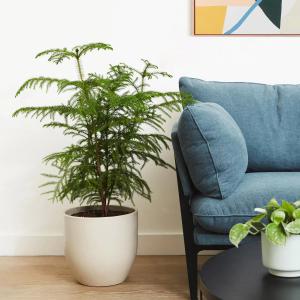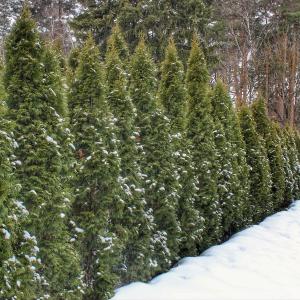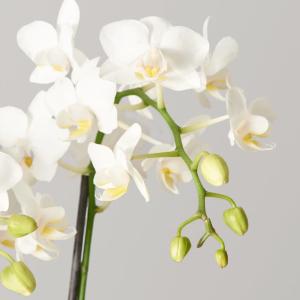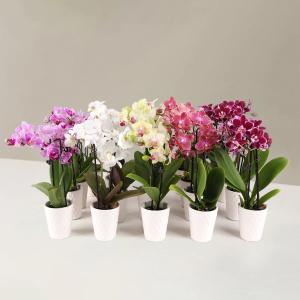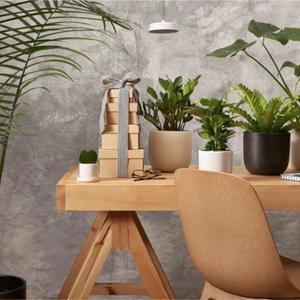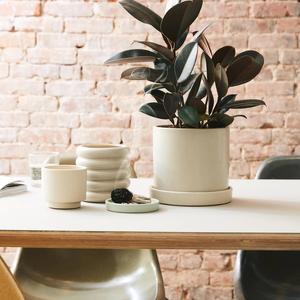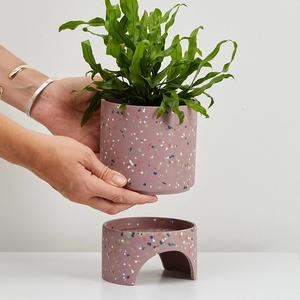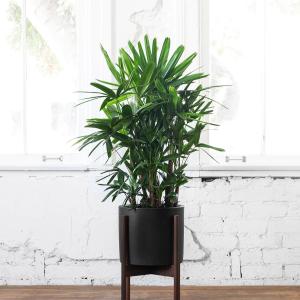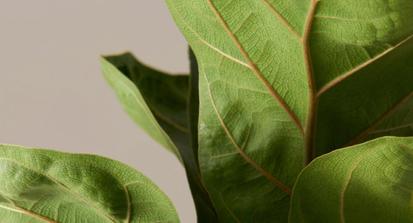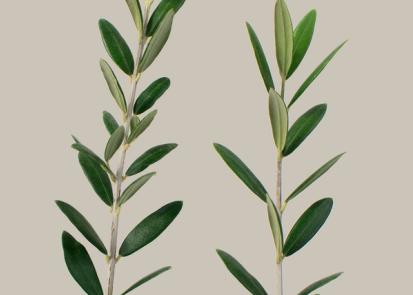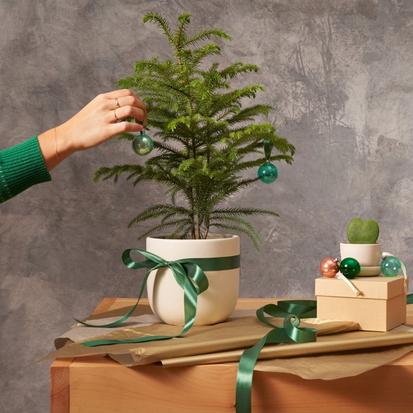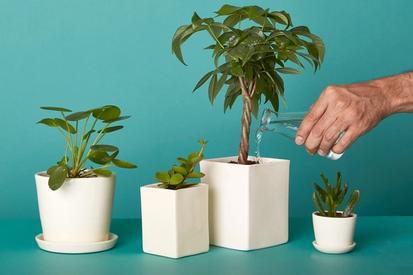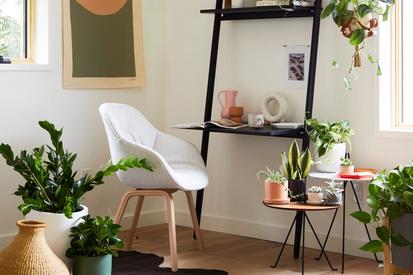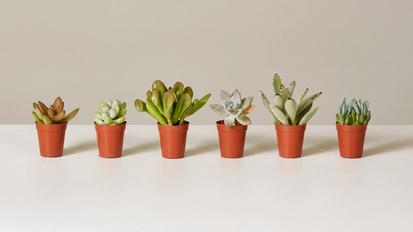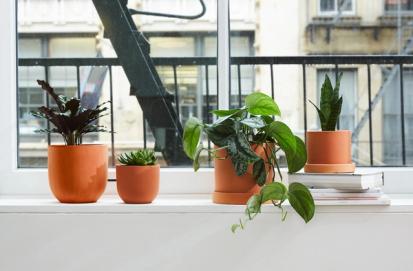The Ficus elastica, commonly known as the Rubber Plant, is a popular houseplant admired for its striking, glossy leaves and easy-care nature. Native to Southeast Asia, this versatile plant can thrive in a variety of indoor environments, making it a favorite among both novice and experienced plant enthusiasts. Its bold, dark green foliage adds a touch of elegance to any space, while its air-purifying qualities contribute to a healthier home.
What’s more, the plant boasts an unusual history. Along with Hevea brasiliensis, it has been used for its latex sap to make rubber—hence its nicknames, rubber fig, and rubber tree. In tropical Northeastern India, Ficus elastica roots are even used to make incredible “living bridges”! A dead tree trunk is placed across a river, and the Ficus elastica roots are guided along the trunk. As the trunk rots, the roots grow to the other side and thicken, and more roots are trained to complete the now wind- and flood-resistant bridge.
With the right care, the Ficus elastica can grow into a stunning indoor tree, providing a dramatic focal point. Below we explore the essential tips and tricks to help you keep your Rubber Plant thriving.
Large Rubber Tree
The Ficus elastica’s family, Moraceae, is a family of shrubs, trees, and lianas; they are known for bleeding a latexy sap upon wounding, and exhibiting “foliar polymorphisms.” This means that their leaf shapes will be different for different stages of life, which is a unique and special feature, as most other plants exhibit the same leaf shapes throughout their lives.
Rubber Tree Care Instructions
Sunlight
A Rubber Tree thrives in bright, indirect sunlight to a few hours of direct sunlight when acclimated. Preferably found in an East or West window, or a diffused South window. While it can tolerate lower light conditions, too little light may cause slower growth and leaf drop. Rotating the plant regularly ensures even light exposure, promoting balanced growth.
Not sure if your plant is receiving enough light? Try measuring with a light meter to ensure your Rubber Tree is in the correct conditions. Usually, you can tell if the tree is not receiving enough light by the color on its leaves, which will begin fading or if leaves excessively drop.
Water
It is best to water your Rubber Tree every 1-2 weeks, allowing the soil to dry out between waterings. Expect to water more often in brighter light and less often in lower light.
If the plant’s leaves begin curling inward or the potting mix is dry, this is a sign you need to water it more often. Conversely, if the leaves begin yellowing or the potting mix is wet, you should decrease the frequency of your watering schedule.
Humidity
Normal room humidity will do, but the Rubber tree will grow better under higher humidity conditions if possible, preferably between 30-60%. Consider incorporating a humidifier to boost humidity levels more consistently if the air in the home is dry.
Temperature
It is best to aim for a temperature of 65°F to 85°F (18°C-30°C) for your Rubber Tree, and not let it go below 60°F (15°C). Remember, this plant is native to warm jungle climates!

Potting & Soil
Repot when its roots start growing out of the drainage holes or when it becomes root-bound, typically every 2-3years depending on how fast it grows. Spring or early summer is the best time to repot, as the plant is actively growing. Choose a pot that’s 1-2 inches larger in diameter than the current one.
Use a well-draining potting mix that is rich in organic matter. If desired, you can mix in extra ingredients such as perlite or lava rocks to increase soil aeration and drainage around the roots.
Fertilizer
Fertilize on a bi-weekly or monthly basis during the growing season (spring and summer) using a balanced, water-soluble fertilizer applied at the time of watering. Reduce or stop fertilizing during the fall and winter when the plant’s growth slows, but if you're growing under a grow light year-round you can continue to fertilize. Always follow the instructions on the fertilizer label for best results.
Pruning
The Rubber tree will benefit from occasional pruning to keep it healthy, but it'll also help to create a more robust tree. This is best done in early spring when the plant is actively growing.
To prune, use clean, sharp pruners to cut back any dead, damaged, or overgrown leaves and stems. If you're pruning to encourage branching, you can cut back the tips of the main stems just above a leaf node to promote bushier growth. After pruning, ensure the plant is placed in a location with bright, indirect light and maintain regular watering to support its recovery.
Propagation
To propagate a Rubber tree, you can use either stem or leaf cuttings. For stem cuttings, select a healthy stem with a few leaves and cut it below a leaf node. If using leaf cuttings, take a leaf with a small section of stem attached. Place the cutting in water or moist soil, keeping it in a warm, bright area but out of direct sunlight. Change the water weekly if propagating in water, or keep the soil consistently moist if using soil.
Once roots are well-established, usually in a few weeks to a couple of months, transplant the cutting into a pot with well-draining soil and continue with proper care.

Common Problems
The Rubber Tree is an easy-going plant and is generally pest-free. Treat pests as soon as they appear with weekly sprays of a natural pesticide like neem oil or an insecticide and regularly wipe-down the plants leaves.
Here are some common problems you may encounter when caring for a Rubber Tree:
SYMPTOM: Mushy leaves or black stems
CAUSE: Overwatering
SYMPTOM: Drooping leaves, dry potting mix
CAUSE: Thirsty plant, underwatered or low humidity
SYMPTOM: Leaf drop, etiolation:
CAUSE: Not enough light
FAQs
Are Rubber Trees safe for pets?
This plant is not a pet-friendly houseplant; it's considered toxic due to its milky sap. It is toxic to cats, dogs, and humans if consumed. The best practice is always to keep these houseplants out of reach of small children and pets.
How big does a Rubber Tree get?
Outdoors, this plant can reach an ultimate height of about 30 ft. (10 meters) and will have a spread of about 10 ft. (3.2 meters) over the years. Grown indoors, it will still be somewhat large, likely reaching 6 to 10 ft. or 2 to 3 meters, if provided the proper conditions.
Are Rubber Trees prone to pests?
The Rubber Tree is generally a very easygoing plant but are prone to getting plant pests such as scale or mealybugs. If so, treat immediately with weekly sprays of insecticide or neem oil, as well as regular wipe-downs of the plant.
Words By The Sill
Empowering all people to be plant people—a collection of articles from The Sill’s team of plant experts across a variety of plant care topics to inspire confidence in the next generation of plant parents. Welcome to Plant Parenthood™.
